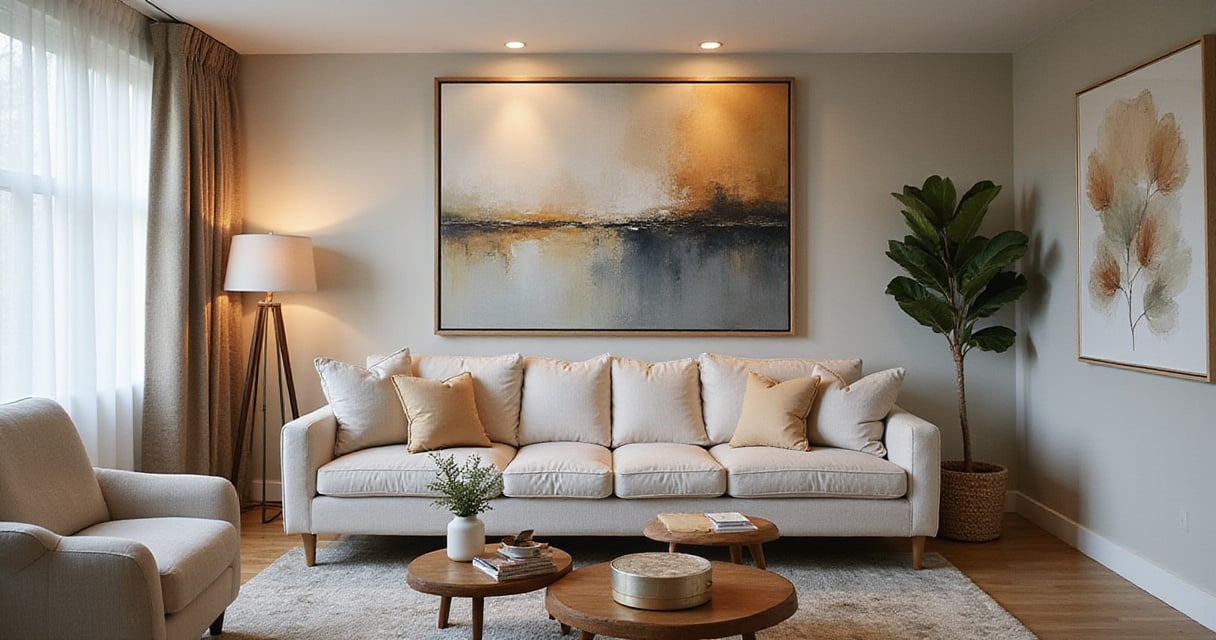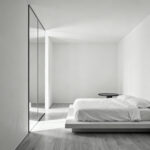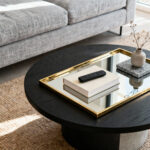You know the biggest misconception people have about decorating a small apartment? They think that a small space requires small furniture. I see it all the time—these sad, doll-sized sofas and tiny little rugs that float in the middle of the room like postage stamps. It’s a gut instinct, but it’s completely wrong. It just makes the space feel cluttered, hesitant, and frankly, a bit cheap.
The secret to sophisticated small-space living isn’t about shrinking everything down. It’s about being deliberate. It’s about choosing fewer, better pieces with the correct scale and making every single one count. It’s about creating a sense of intention, flow, and quiet luxury. So let’s put aside the generic blog advice. This is what you actually need to know.
Foundational Planning & Layout Strategies
Before a single throw pillow is considered, we have to get the bones of the room right. This isn’t the glamorous part, but it’s the part that separates a truly chic space from a frustrating, poorly designed one. Get this right, and everything else falls into place.
1. Define a Clear Focal Point to Anchor Your Room
People always ask me where to start. Always. And my answer is to find your room’s anchor. A focal point isn’t just some designer jargon; it’s a non-negotiable for making a small space feel coherent. Without one, the eye just wanders aimlessly, taking in all the clutter and a dozen different things at once. It feels chaotic. A focal point gives the eye a destination, a place to land, which immediately makes the entire room feel calmer and more intentional.

I once worked with a client in a beautiful Back Bay apartment, but his living room felt disjointed despite having exquisite furniture. Nothing related to anything else. We identified the wall opposite the door, installed a single, oversized piece of abstract art, and rearranged the seating to honor it. The transformation was instant. The room finally had a purpose. If you don’t have a fireplace or a stunning view, you create one with a spectacular mirror, a gallery wall, or a piece of art that you absolutely love. This is where you tell the room’s story.
With your room’s anchor established, the next step is to wrap the entire space in a color that makes it feel expansive.
2. Strategically Choose a Color Palette to Expand Space Visually
This is where most of the internet advice gets it half-right. Yes, light colors make a space feel bigger. We all know this. But the real insider trick isn’t just about choosing a pale shade; it’s about creating a seamless, monochromatic envelope. The goal is to blur the boundaries of the room. You do this by painting the walls, the baseboards, the trim, and the ceiling in the same light color. Using a contrasting white on your trim visually chops the walls up, making them feel shorter and the room more constricted.

The real BS is the idea that every small room needs a dark, moody “jewel box” accent wall. In the wrong hands, that accent wall doesn’t look bold; it looks like a black hole that’s sucking all the light out of your already-limited space. Instead of a jarring color, think about a textural accent, like a subtle grasscloth or a removable wallpaper with a soft pattern. My shortcut? Choose a sophisticated, complex neutral—a soft gray with a hint of green, or a warm white that isn’t builder’s beige. And always use an eggshell finish; it has just enough sheen to bounce light around beautifully without looking glossy.
This seamless color foundation sets the stage for furniture that feels light and airy, which brings us to our next point.
3. Opt for Legged Furniture to Create an Open, Airy Feel
Can we please talk about why so many sofas sit on the floor like giant, upholstered bricks? Nothing kills the perceived size of a room faster than a piece of furniture that completely blocks the sightline to the floor. The principle here is simple: the more floor space your eye can see, the larger and more open your brain registers the room to be. Furniture with legs—we call it leggy furniture—is the key. It allows light and air to circulate underneath, creating an essential feeling of spaciousness.
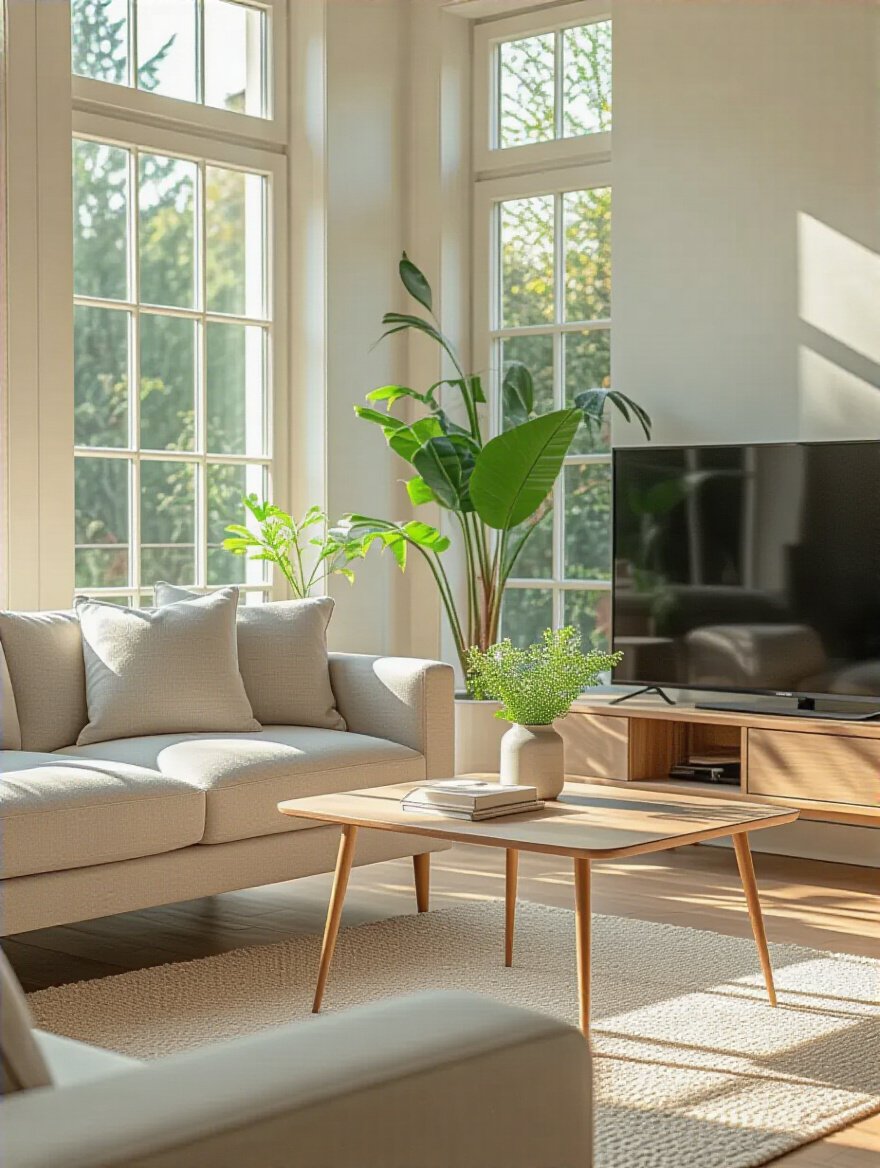
I learned this the hard way early in my career. I helped a client choose a stunning, high-quality sectional for their city apartment. It was beautiful, but it was a solid block all the way to the floor. The minute it was delivered, the room felt suffocating. We swapped it for a similar model with slender, tapered legs, and the entire space opened up. It was the same footprint, but the visual difference was staggering. So, my rule is this: anything you can lift off the ground, you should. Sofas, media consoles, side tables, armchairs—let them breathe.
This sense of lightness is a guiding principle. Now let’s use that same logic to define the functions within your open space.
4. Create Defined Zones with Area Rugs for Multifunctional Living
In an apartment, your living room is never just a living room. It’s often your office, your dining room, and your lounge, all in one. The common mistake is to either use one giant rug that covers everything (making it feel like a monolithic, undifferentiated space) or, even worse, a tiny rug that floats aimlessly. A rug’s job is to create an invisible wall. It carves out a specific zone and says, “This is the conversation area,” or “This is where we dine.” It gives every square foot a clear purpose.
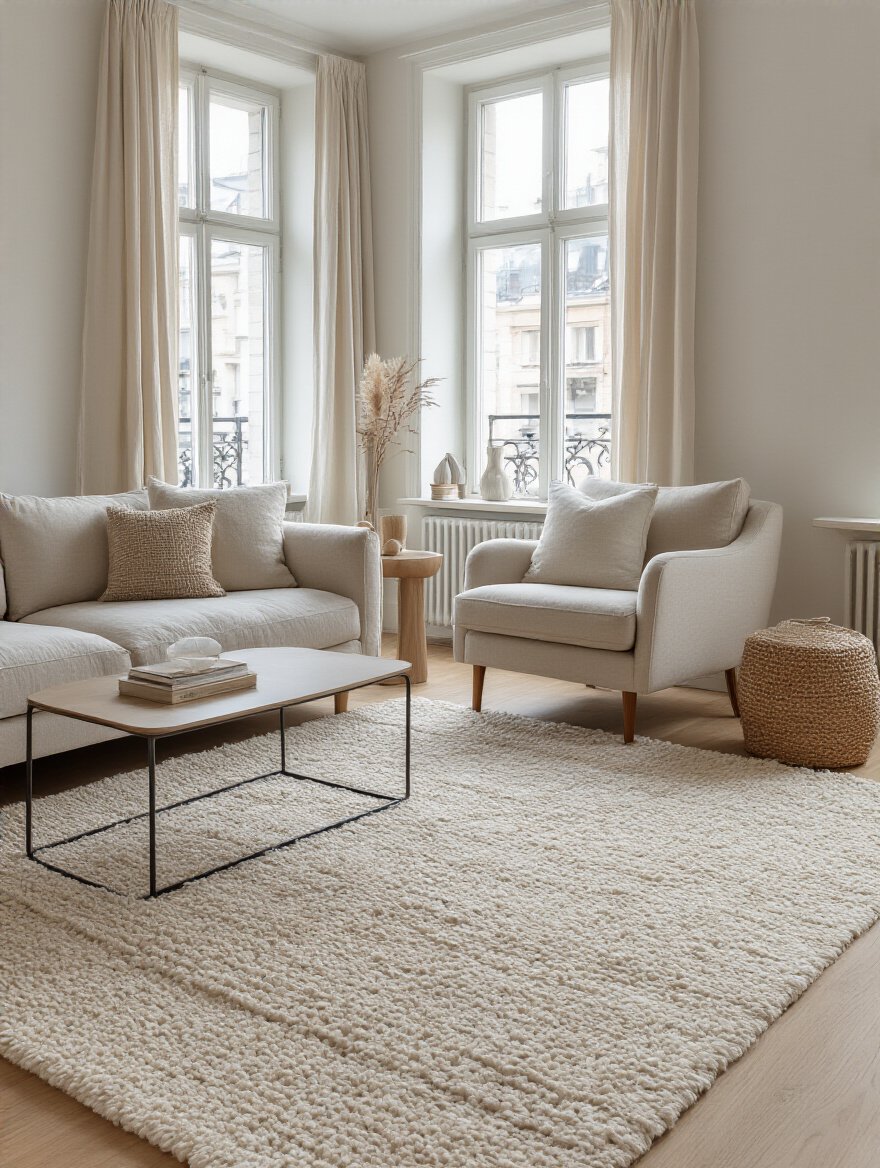
You want the rug to be substantial enough to anchor your main furniture grouping. The rule I live by is that at least the front two legs of your sofa and any chairs must be on the rug. All the legs are even better. This is what grounds the arrangement and makes it feel intentional, not like your furniture is about to float away. I once consulted on a studio where just adding two distinct rugs—a larger, soft one for the seating area and a durable, flatweave runner for the kitchenette—made the 400-square-foot space feel like a proper one-bedroom. It’s a psychological trick that absolutely works.
Of course, a perfectly placed rug won’t help if the furniture on top of it is the wrong size, which is a critical point we can’t afford to skip.
5. Measure Your Space Accurately Before Buying Any Furniture
This may sound obvious, but I promise you, it’s the step that 90% of people get wrong, leading to expensive and soul-crushing mistakes. “Eyeballing it” is not a design strategy. You must measure everything: the room’s dimensions, yes, but also the doorways, the stairwells, and the turning radius of your hallway. I watched a client lose nearly two thousand dollars on a non-refundable custom sofa because they forgot to measure the elevator. The sofa now lives with their suburban cousin.

The shortcut here is to use painter’s tape. Once you have the dimensions of a piece you’re considering, tape its exact footprint out on your floor. Live with it for a day. Walk around it. Does it block a natural pathway? Does it make the room feel cramped? This simple step allows you to experience the scale and flow of the piece in the real world before you spend a single dime. Remember the 18-inch rule between the sofa and the coffee table, and the 3-foot rule for major walkways. These aren’t suggestions; they are the measurements of comfortable living.
Once your space is perfectly measured, the game becomes about maximizing what you have, especially the overlooked vertical real estate.
Ingenious Space Optimization & Storage Solutions
In luxury design, “storage” is not about hiding things away in plastic bins. It’s about integrating smart, beautiful solutions into the fabric of the room. It’s about making your space work harder so you don’t have to.
6. Leverage Vertical Space with Tall Bookshelves and Shelving Units
The most underutilized real estate in any apartment is the wall space above eye level. Instead of cluttering your floor with low, bulky credenzas, draw the eye upward. Tall, slender bookcases or floating shelves create an illusion of height, making the entire room feel grander and more expansive. This strategy moves the storage off your precious floor and onto the walls, which is a non-negotiable for small-space success.

I always advise clients to go as tall as they can. And here’s the real insider move: paint the bookshelf the exact same color as the wall. When the unit blends in seamlessly, it doesn’t read as a bulky piece of furniture. Instead, it becomes an architectural feature, a custom built-in that looks incredibly high-end. The objects on the shelves then appear to float, adding depth and personality without the visual weight of a contrasting piece of furniture. It’s a trick that designers use constantly to add storage and sophistication simultaneously.
This idea of smart integration leads perfectly into our next point: furniture that does more than one job.
7. Integrate Multi-functional Furniture like Ottoman Storage and Sofa Beds
In a small, sophisticated space, every piece of furniture must earn its keep. A simple coffee table is a missed opportunity when a beautiful storage ottoman can do the same job while also hiding away your extra throws, magazines, and the general clutter of life. This isn’t about compromising on style; the market for multi-functional pieces is now so refined that you can find absolutely stunning designs that work double-duty. A well-designed sofa bed, for example, is no longer a lumpy, back-breaking affair.

But here is my non-negotiable advice: invest in the mechanism. When it comes to a sofa bed, a flimsy, clunky frame will make you regret the purchase every single time you use it. I learned this the hard way with a rental property I was furnishing. We saved a few hundred dollars on a cheaper model, and the complaints from guests were constant. We replaced it with one that had a solid steel frame and a proper mattress, and it became a selling point. The same goes for an ottoman; a sturdy hinge that opens smoothly feels luxurious, while a flimsy one feels cheap. These are the details that matter.
Now that your furniture is working hard, let’s use a little visual magic to expand the space even further.
8. Use Mirrors Strategically to Double Light and Perceived Space
This is perhaps the oldest trick in the book, but it’s a classic for a reason. A large mirror doesn’t just show you your reflection; it bounces light around the room and creates a powerful illusion of depth. The common mistake, however, is using dinky little mirrors as “art.” A collection of small, fussy mirrors just creates more visual clutter. To truly make an impact, you need to go big. A single, oversized floor mirror leaned against a wall, or a large framed mirror hung opposite a window, is what creates the magic.

The goal is to trick the eye into seeing more space. Placing a mirror opposite a window literally doubles your natural light and makes it feel like you have another window. Last spring, I worked on a narrow living room in a city townhouse. It felt like a tunnel. We placed a massive, floor-to-ceiling mirror on one of the long walls. It instantly broke down the corridor effect, visually doubling the width of the room and reflecting the light from the front windows all the way to the back. It was more effective—and far cheaper—than any renovation could have been.
Mirrors expand space visually, and our next tip is about expanding it functionally by tucking away clutter.
9. Implement Hidden Storage Solutions within Benches and Coffee Tables
The secret to a perpetually tidy-looking room is having a designated home for every little thing that causes visual noise—the remote controls, the charging cords, the kids’ toys. Hidden storage is your best friend here. A chic lift-top coffee table or a beautiful bench under a window that doubles as storage is not just a piece of furniture; it’s a strategy for maintaining calm and order. It allows you to clear surfaces in seconds, which is the fastest way to make a room feel more serene and spacious.
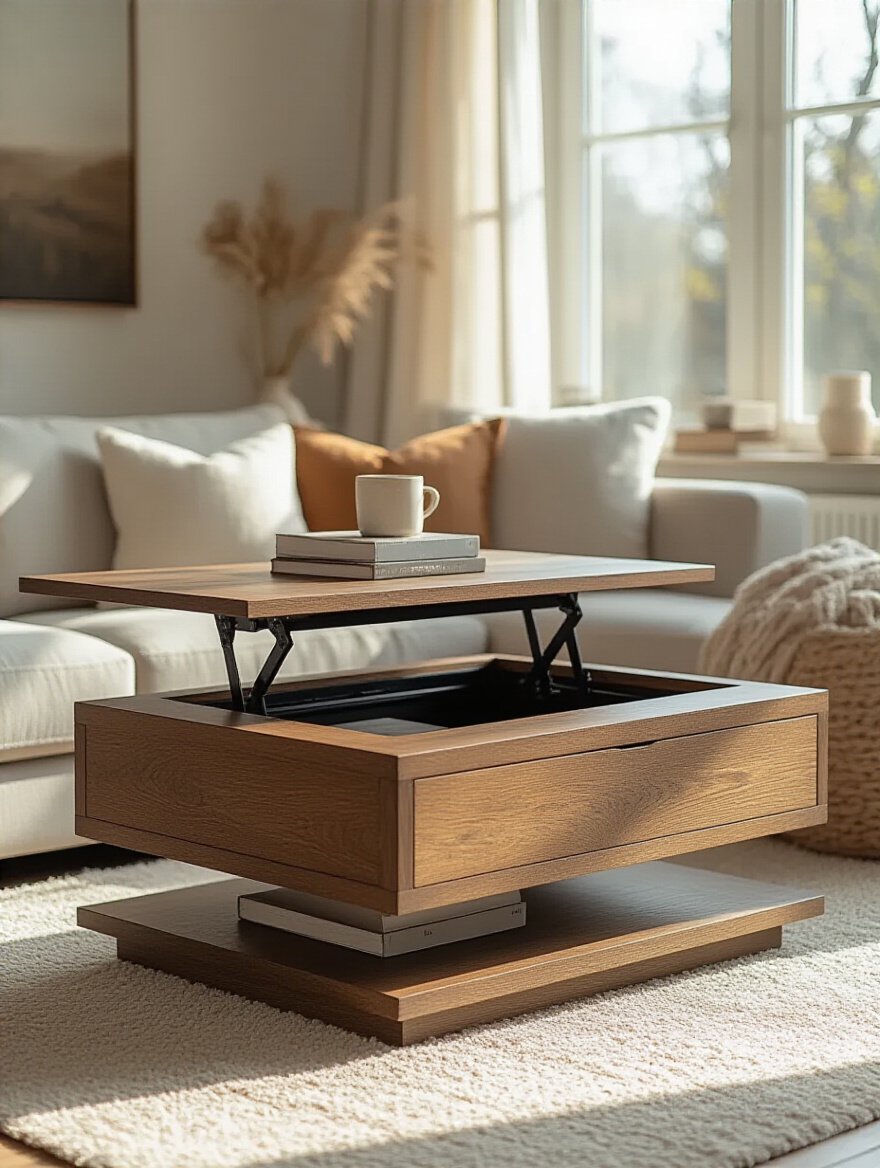
What’s essential here is organization within the hidden storage. It can’t just become a junk drawer on a larger scale. I always recommend using small trays or fabric bins inside your storage ottoman or coffee table to compartmentalize items. One bin for electronics, one for coasters, one for a cozy throw blanket. This way, when you lift the top, you’re greeted with order, not chaos. This small step turns a simple storage piece into a truly functional system that supports a sophisticated, clutter-free lifestyle.
This discipline in storage echoes the discipline required in choosing furniture that is appropriately scaled for your space.
10. Select Right-Sized Furniture to Avoid Overwhelming a Small Area
This brings us back to my original pet peeve. The key is not “small” furniture; it’s “right-sized” furniture. An apartment-scaled sofa, for instance, isn’t just shorter; it often has a shallower depth and lower-profile arms. These subtle adjustments make a world of difference. A big, overstuffed sofa with puffy arms will devour a small room, even if it technically “fits.” You want pieces with clean lines and a trim silhouette that feel tailored to the space.

The concept I always drill into my clients is the importance of “negative space.” That’s the empty space around your furniture. It’s what allows a room to breathe. When you cram in pieces that are too large, you eliminate that negative space, and the room feels suffocating. A shortcut I swear by is choosing an armless sofa or chair. Removing the bulky arms can visually open up a room and save you precious inches without sacrificing seating. It’s about being smart and selective, choosing grace over bulk.
With the functional bones now perfectly in place, we can finally move on to the best part: layering in the personality and comfort that make it feel like home.
Infusing Style, Comfort & Personality
This is where a room transforms from a well-designed space into your space. It’s about layering in texture, art, and life. It’s the soul of the room, and it’s deeply personal.
11. Layer Different Textures with Throws and Pillows for Cozy Comfort
A room designed with only smooth, flat surfaces will always feel cold and one-dimensional, no matter how perfect the layout. Texture is what provides visual weight and warmth. It’s what makes a space feel rich, inviting, and luxurious. We’re talking about the contrast between a chunky knit throw, a velvet pillow, a smooth leather accent, and a nubby linen. This tactile variety is what engages the senses and creates a feeling of sophisticated comfort.

My formula for this is simple: aim for at least three to five different textures in your main seating area. Start with the base texture of your sofa. Then, add a plush velvet or a rich bouclé pillow. Introduce a soft, cashmere or chunky wool throw. Perhaps there’s a leather pouf or a wooden side table nearby. This layering of materials is what gives a room that professionally curated look. The common mistake is buying the matching pillow set that comes with the sofa. Please, don’t. It’s a shortcut to a generic, soulless room. Mix, match, and curate.
Once your space feels physically comfortable, it’s time to make it emotionally resonant with art that speaks to you.
12. Curate Meaningful Artwork to Reflect Your Personality and Style
Artwork is not a final-step accessory; it is the soul of the room. It is the most powerful way to inject your personality into a space. And I’m not talking about generic, mass-produced canvas prints from a big-box store. I’m talking about pieces that mean something to you. Whether it’s a photograph you took on a memorable trip, a print from a local artist, or even a beautifully framed scarf, meaningful art tells your story. In a small space, a single, large-scale piece of art can often have a much greater impact than a dozen small things, creating a powerful focal point and an illusion of a larger wall.

The BS to ignore here is that you need to spend a fortune on art. It’s simply not true. My best advice is to explore online print shops like Society6 or Minted, or visit local art fairs and student shows. The most important thing is that you love it. I once had a client frame a collection of vintage matchbooks from their favorite restaurants around the world. It was hung in a simple grid, and it became the most interesting and personal feature of their entire home. It cost next to nothing but was priceless in terms of personality.
Complementing this personal expression, the next step is to introduce an element of living, breathing nature.
13. Integrate Greenery with Indoor Plants for Freshness and Life
Nothing makes a room feel more alive than a touch of green. Plants add natural texture, color, and a sculptural element that you just can’t get from inanimate objects. They literally breathe life into a space, purifying the air and adding a sense of organic calm. In an apartment, where you might be disconnected from nature, bringing it indoors is essential for well-being. The key in a small space is to think vertically.

Instead of taking up valuable floor space with multiple small pots, go for one statement floor plant, like a Fiddle Leaf Fig or a Snake Plant, to anchor a corner. Or, use trailing plants like a Pothos on a high shelf or in a hanging planter to draw the eye up. A confession: I used to be terrible with plants. Then I discovered self-watering planters. They are an absolute game-changer for busy people and are my secret weapon for ensuring my clients’ spaces stay lush and green without becoming a chore.
With life and personality blooming, we need to set the mood, and that is all about the lighting.
14. Control Ambiance Using Multiple Lighting Sources (Task, Accent, Ambient)
Please, I beg of you, do not rely on a single, harsh overhead light. It’s what we call “the big light,” and it casts unflattering shadows and creates a flat, sterile environment. Truly sophisticated lighting design is all about layers. You need three types: ambient light for general illumination (this can be your ceiling fixture), task light for specific activities like reading (a floor lamp next to a chair), and accent light to highlight a feature you love (a small picture light over art or an uplight behind a plant).

Having these different sources on dimmers gives you complete control over the mood of the room. You can instantly go from bright and functional for cleaning, to soft and intimate for entertaining. This is, without a doubt, the single most impactful way to elevate the feeling of a room. I had a client who was convinced her living room was “depressing.” We didn’t change a single piece of furniture. We just added a floor lamp, a table lamp, and put everything on dimmers. The transformation was profound. Her space finally felt warm, versatile, and expensive.
Lighting highlights your decor, and our next tip is about creating a chic display without adding any bulk.
15. Employ Floating Shelves for Decorative Displays Without Bulk
A traditional, heavy bookcase can visually dominate a small living room. Floating shelves are the elegant solution. Because their mounting hardware is hidden, they appear to hover on the wall, providing a light, airy platform for your treasured objects without consuming any floor space or adding visual weight. They are perfect for creating a curated display—what designers call a “vignette”—that draws the eye upward and adds a personal, styled touch to your walls.
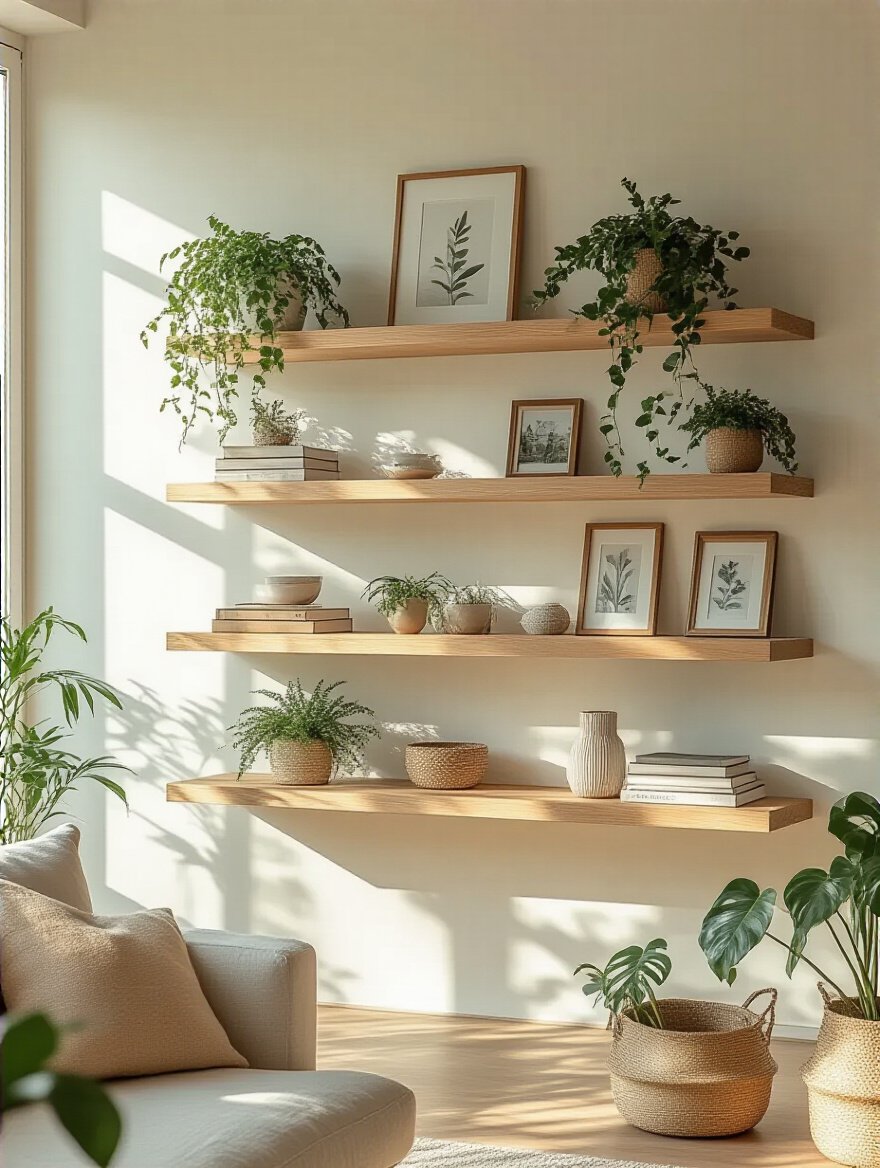
The secret to styling floating shelves is restraint. Don’t cram them full. Think like a gallery curator. Group items in odd numbers, vary their height and texture, and most importantly, leave plenty of negative space. A few books stacked horizontally, a beautiful ceramic vase, and a small framed photo can look far more chic than a hundred little trinkets. It’s about intentional placement, not just storage. A pro tip: install a hidden LED light strip under a shelf to wash the wall below with a soft glow. It adds instant drama and a high-end, custom feel.
Now that your space is thoughtfully planned and styled, let’s discuss how to achieve this look without an unlimited budget.
Smart Decorating on a Budget & Sustainable Tips
Luxury isn’t about spending the most money; it’s about making the smartest choices. A truly sophisticated space feels collected and personal, not like it was delivered from a single showroom floor. This is where you can be creative and sustainable.
16. Revamp Existing Furniture with Paint or Fabric for a Fresh Look
Before you discard that dated brown dresser or tired old armchair, see its potential. A fresh coat of high-quality paint and some new hardware can completely transform a piece of furniture for a tiny fraction of the cost of buying new. This isn’t just about being budget-conscious; it’s about creating something truly bespoke. You can choose the exact shade and finish that perfectly complements your space, giving you a custom look that no one else has.
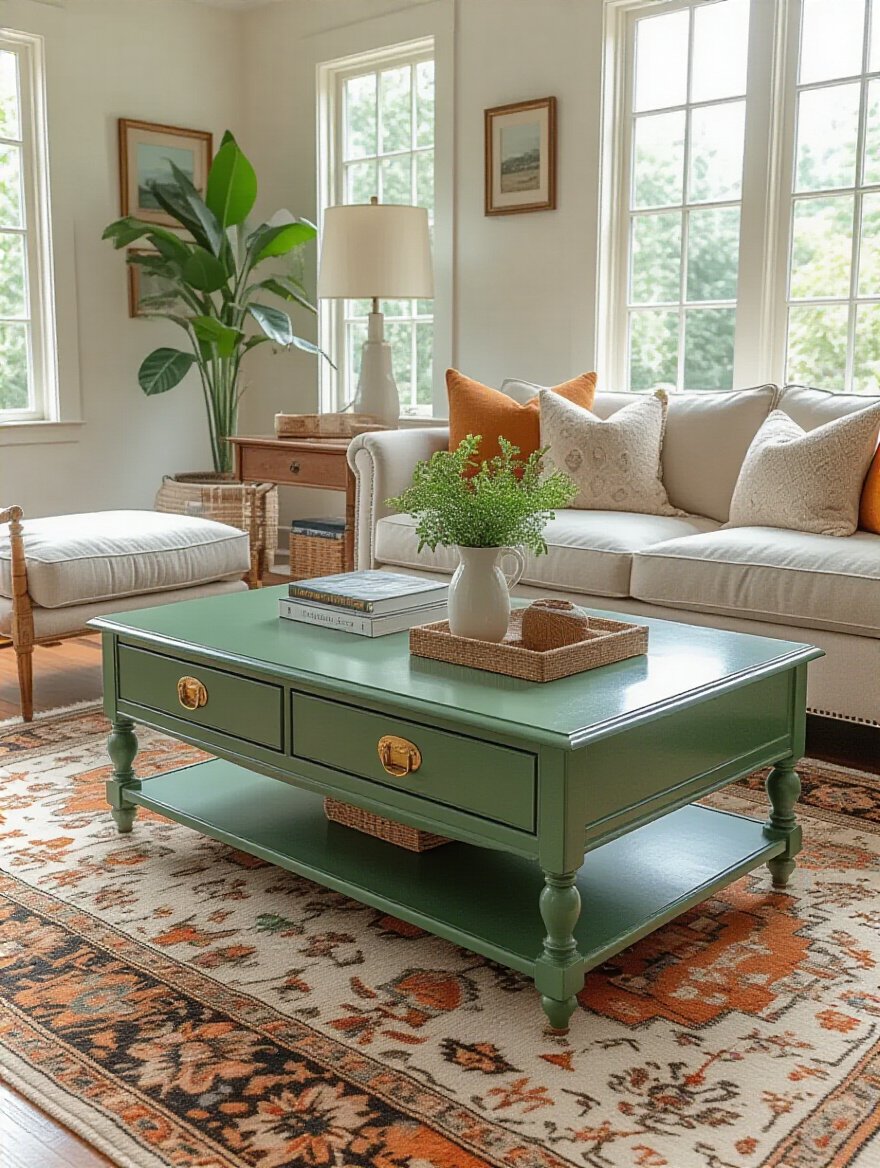
I must stress, however, that success lies entirely in the prep work. This is the BS everyone gets wrong with DIY. People get excited and slap on some paint, only to have it peel and chip within months. You must clean, sand, and prime the piece properly. A shellac-based primer like Zinsser B-I-N is my go-to for slick surfaces, ensuring the paint has something to grip onto. Investing a few extra hours in preparation is the difference between a project that looks professional and one that looks like a tragic DIY fail.
This spirit of transformation is key, whether you’re working with your own pieces or finding new treasures.
17. Hunt for Unique Gems at Thrift Stores and Secondhand Shops
A room filled with only brand-new furniture can feel sterile and devoid of character. The secret to a room with soul is mixing old and new. Thrift stores, consignment shops, and flea markets are where you find the unique, conversation-starting pieces that give a home its personality. I’m talking about vintage brass lamps, quirky ceramic art, or a solid wood side table with beautiful patina. These finds infuse your space with history and a story.

My advice for thrifting is to go in with a plan. Know your style, know your measurements, and know what you’re looking for. But also, be open to surprise. When you see a piece that speaks to you, grab it. Unique items don’t last long. I found a stunning pair of oversized, gilded mirrors for a client at a local consignment shop for a pittance. They became the anchors of her entire living room, and everyone who visits assumes they were a massive investment.
As you hunt for these treasures, pay close attention to the fabrics, because their durability is paramount for long-term style.
18. Prioritize Durable, Easy-to-Clean Fabrics for Long-Lasting Style
It doesn’t matter how beautiful a sofa is if it’s covered in a delicate fabric that stains the moment you look at it. In a living room—especially a small one that gets a lot of use—fabric durability is not a luxury, it’s a necessity. Performance fabrics like Crypton or even solution-dyed acrylics (like Sunbrella, which is no longer just for patios) are engineered to resist stains, moisture, and wear. They are a smart, long-term investment that will keep your furniture looking pristine for years.

Forget the misconception that durable means stiff and synthetic. The technology has advanced so much that you can now find performance fabrics that look and feel like plush velvets, soft linens, or rich wools. I always tell my clients to request a fabric swatch and live with it for a few days. Spill some water on it. Let the dog nap on it. See how it performs in the real world before you commit. A smart shortcut? Removable, machine-washable slipcovers. They offer the ultimate peace of mind and allow you to change your style with the seasons.
With your furniture protected by smart fabric choices, you can afford to be a bit more playful and less permanent with your walls.
19. Install Removable Wallpaper for a Non-Permanent Accent Wall
For renters, or for anyone hesitant to commit to a bold design choice, removable wallpaper is a godsend. It allows you to create a high-impact accent wall with a stunning pattern or texture, completely transforming the feel of your room without any permanent damage. It’s the perfect way to define a zone, create a focal point behind a sofa, or simply add a dose of personality that can be easily undone when you move or your tastes change.

I’ve seen some bad applications, so my advice is to invest in quality paper and take your time with the installation. The key to a professional-looking seam is the “overlap and score” method. Overlap the edges of the panels by a tiny fraction, then use a sharp utility knife and a straightedge to cut through both layers at once. When you peel away the excess strips, you’re left with a perfect, almost invisible seam. It takes a little patience, but the flawless result is worth it.
An accent wall is a bold statement, but a gallery wall is a personal one, which brings us to our final touch.
20. Style a Chic Gallery Wall with Affordable Prints and Personal Photos
A gallery wall is the ultimate expression of personal style. It’s a curated collection of what you love, all gathered in one place. It has far more character than a single piece of art and is incredibly budget-friendly. You can mix personal photos with affordable prints, postcards, and even digital art you download for free from museum archives (like the New York Public Library’s digital collection) and have printed locally. This approach makes creating a large-scale art installation incredibly accessible.

The mistake most people make is hanging things too high and too far apart. Start by laying out your entire arrangement on the floor to get the composition and spacing right. A good rule of thumb is to keep 2-3 inches between frames for a cohesive look. And use picture-hanging strips. They are a renter’s best friend and allow you to make adjustments without turning your wall into Swiss cheese. Your gallery wall can grow and evolve with you over time, making it a living, breathing part of your home’s story.
